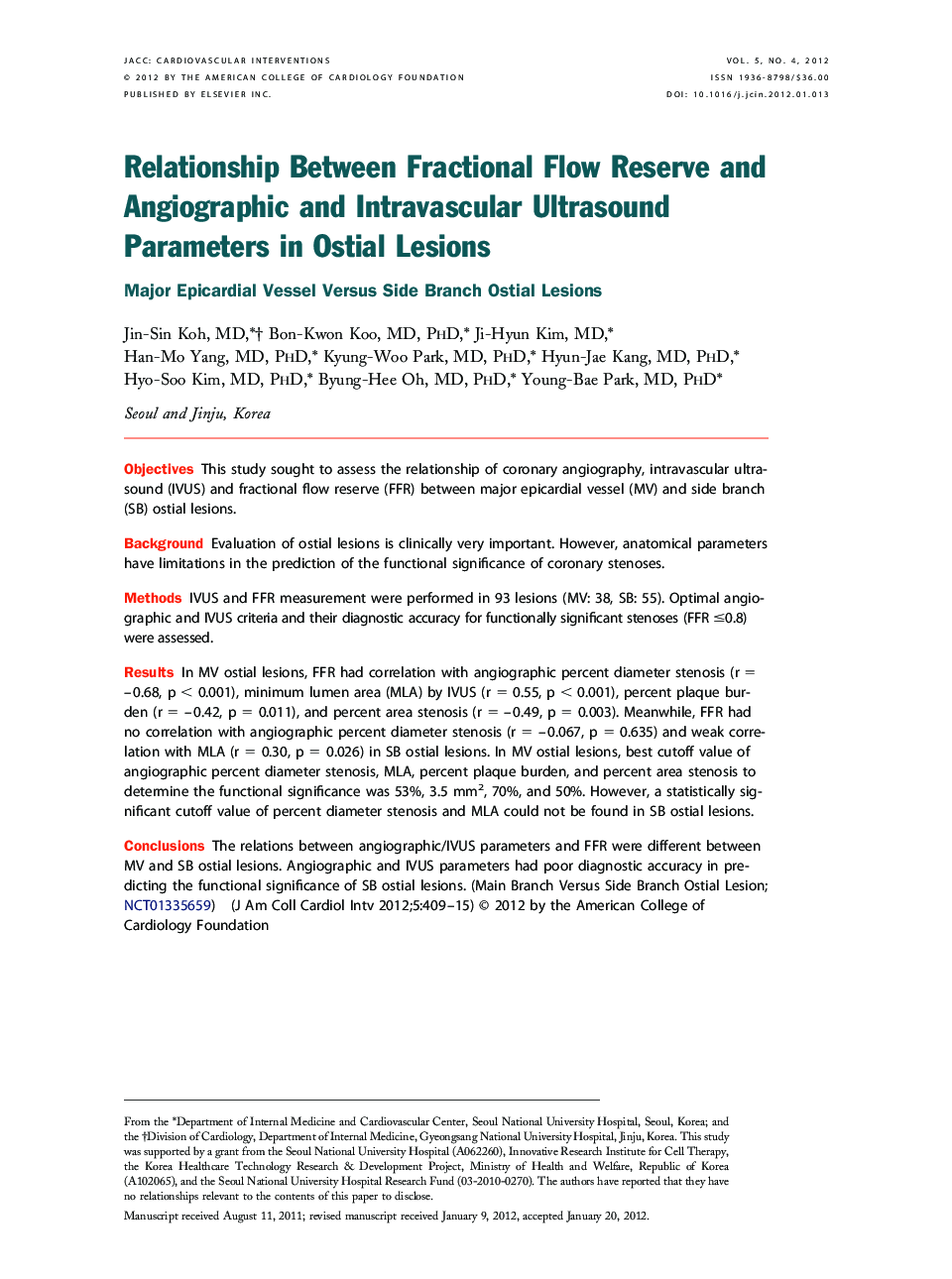| Article ID | Journal | Published Year | Pages | File Type |
|---|---|---|---|---|
| 2941489 | JACC: Cardiovascular Interventions | 2012 | 7 Pages |
ObjectivesThis study sought to assess the relationship of coronary angiography, intravascular ultrasound (IVUS) and fractional flow reserve (FFR) between major epicardial vessel (MV) and side branch (SB) ostial lesions.BackgroundEvaluation of ostial lesions is clinically very important. However, anatomical parameters have limitations in the prediction of the functional significance of coronary stenoses.MethodsIVUS and FFR measurement were performed in 93 lesions (MV: 38, SB: 55). Optimal angiographic and IVUS criteria and their diagnostic accuracy for functionally significant stenoses (FFR ≤0.8) were assessed.ResultsIn MV ostial lesions, FFR had correlation with angiographic percent diameter stenosis (r = –0.68, p < 0.001), minimum lumen area (MLA) by IVUS (r = 0.55, p < 0.001), percent plaque burden (r = –0.42, p = 0.011), and percent area stenosis (r = –0.49, p = 0.003). Meanwhile, FFR had no correlation with angiographic percent diameter stenosis (r = –0.067, p = 0.635) and weak correlation with MLA (r = 0.30, p = 0.026) in SB ostial lesions. In MV ostial lesions, best cutoff value of angiographic percent diameter stenosis, MLA, percent plaque burden, and percent area stenosis to determine the functional significance was 53%, 3.5 mm2, 70%, and 50%. However, a statistically significant cutoff value of percent diameter stenosis and MLA could not be found in SB ostial lesions.ConclusionsThe relations between angiographic/IVUS parameters and FFR were different between MV and SB ostial lesions. Angiographic and IVUS parameters had poor diagnostic accuracy in predicting the functional significance of SB ostial lesions. (Main Branch Versus Side Branch Ostial Lesion; NCT01335659)
